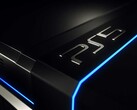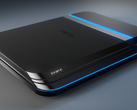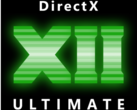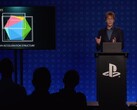Yes, the PlayStation 5 features the single fastest consumer storage solution on the market, if you don’t count insane PCIe Gen4 striped RAID configurations. While faster storage is always a good thing, the PS5’s 825 GB SSD is not a cure-all for other deficiencies and compromises in its configuration.
During the PlayStation 5 spec reveal, Sony chose to draw attention away from the PlayStation 5’s graphics performance. One way it did this was by indicating that higher clock speeds may result in better than linear performance scaling, something that’s been conclusively ruled out for RDNA. Another way was by touting the PS5’s unusually fast SSD storage solution as a fundamental game changer. However, looking at the PC experience, and considering the fact that games have been authored with SSDs in mind for quite some time now, the real-world impact of that 5.5 GB/s storage solution might not be anywhere near as massive.
Let’s consider load times. The greatest supposed benefit of the PS5’s SSD is the complete elimination of load times from open world games. This operates under the assumption that I/O transfers are all that goes on when you’re presented with a loading screen. It’s important to recognise that a lot of CPU and GPU-intensive functions take place while loading too. Kingdom Come: Deliverance, a 2017 title built with the next-gen in mind, features advanced AI routines. Even running on SSD storage, certain actions like the in-game “wait” or “sleep” functions can take over 30 seconds. Why is this? It takes this long, even for Zen 2 CPU cores, to compute the AI routines and dynamic events happening offscreen during a loading period.
This is also why, in the PC space, NVMe SSDs have next to no tangible impact on gaming performance vis-a-via far slower SATA SSDs. SATA SSDs generally cut load times in half or more relative to SSDs. NVMe SSDs, though, rarely shave off more than a second or two beyond that. This is because the rest of the loading process is not I/O bound.
Claims that the PS5’s SSD will magically translate into better graphics performance relative to the Xbox Series X are even farther from the truth. Both the PS5 and the Xbox Series X have extremely fast storage solutions that, in the current scenario are well into the diminishing returns end of the storage speed spectrum.
The Xbox Series X has an SSD that delivers “only” 2.4 GB/s of throughput. Yet, this is fast enough that Microsoft’s confident in being able to implement features like Quick Resume and the Velocity Architecture. With storage that’s so fast the system’s already running into other bottlenecks on both platforms, there isn’t much more that the PS5’s SSD can do in practical terms.
At the end of the day, both the PS5 and Xbox Series X deliver a genuine generational leap over eighth-gen consoles, and that’s something to look forward to. However, at least this generation, Sony will be on the back foot with respect to performance, and no amount of spin is likely to change that.




















